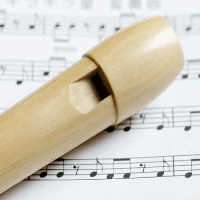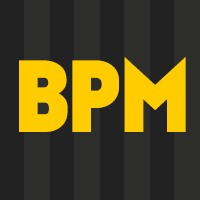How To Read Music

Module Map
Module 1: Prepare to Succeed
In this module you get great tools for learning, practicing and getting on the fast track to reading music.
Module 2: Why the Recorder?
Learn why a recorder is the perfect instrument for this course, how to set it up, where to place your fingers and make your first sound.
Module 3: Reading Music
Now we begin to go step by step in understanding the “math” of music. No more guessing, you’ll read notes correctly and in time.
Module 4: See it, Say it, Play it
Just like you learned to read and write, you’ll do the same with the music language, naturally and at your own pace.
Module 5: Play-along Songs
This is what makes the SSP system so powerful. There are play-along songs for every note, rhythm and concept.
Module 6: Cover the Hole, Play the Whole
Our one-note-@-a-time process introduces Second Space A, the Whole Note and finger exercises to help apply them.
Module 7: Repeat Sign
Part of reading music is following directions, sort of like reading a map. This sign says “Play it Again.”
Module 8: Tie it All Together
An experienced musician knows how to connect notes, giving the effect of longer sounds. Module 8 shows you exactly how.
Module 9: Building Musician Skills
The best musicians don’t just read and play their notes, they also match the musicians around them. Listen and blend.
Module 10: Eighth Notes
So far, all of our notes have been made up of full beats. Now we cut the beat in half – into 2 equal parts. You already know the sound.
Module 11: Musical Styles
Your play-along songs include a variety of musical styles. Module 11 helps you hear and perform them even better.
Module 12: The Band Gives Clues
As you learn to listen analytically, even if you get lost, hearing other instruments can get you back on track.
Module 13: Dotted Notes
Every notation element has a valuable purpose. The dot, while it looks like a period, gives a note 1/2 more of its value.
Module 14: Tempo Markings
A composer knows how fast or slow their music should go. These terms help you play music at the intended speed/tempo.
Module 15: Signs & Symbols
Reading a musical composition is much like following a map. This module gives us a few tools to reach our destination.
Module 16: Softly & Loudly
Music isn’t just soft or loud. There are many levels in between. Here’s a few terms to broaden your DYNAMICS.
Module 17: Sixteenth Notes
In this module, we slice a beat into FOUR equal parts. This layer of rhythm is essential for your music reading.
Module 18: Bonus Lessons
This is extra material not included in the course. It’s beyond our scope. But, if you’re curious, dig in.

Paul Babelay
Instructor
(aka “The Vibe Guy”) is an American vibraphonist, percussionist, drummer and composer. Ray Hair, President of the American Federation of Musicians says, “I would categorize his musicianship and performance ability to rate among the top five (5) percent of all professional musicians throughout the United States and Canada”.
Free Courses
Duis egestas aliquet aliquet. Maecenas erat eros, fringilla et leo eget, viverra pretium nulla. Quisque sed augue tincidunt, posuere dui tempor.
Premium Courses
Duis egestas aliquet aliquet. Maecenas erat eros, fringilla et leo eget, viverra pretium nulla. Quisque sed augue tincidunt, posuere dui tempor.
Ready to get started?
Get in touch, or create an account













